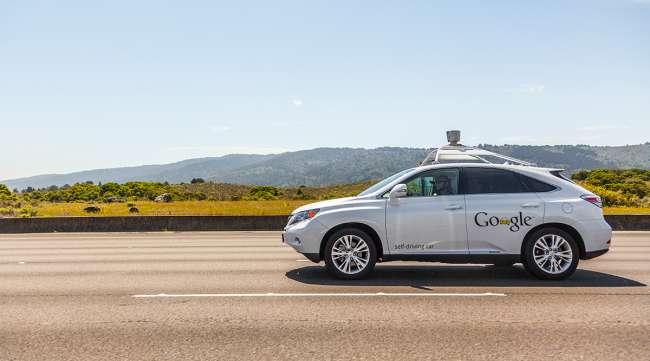Why Self-Driving Cars Will Likely Be Light-Colored

Don’t tell Henry Ford, but getting a car in black may soon get harder.
That’s because self-driving cars are safer and more efficient when they’re light-colored, industry suppliers say.
The reason isn’t to simplify assembly lines, as was the case more than a century ago when Ford reportedly told customers “you can have any color as long as it’s black.”
Rather, it’s because of how self-driving cars, which are poised to become every bit as revolutionary as Ford’s Model T was then, are going to operate. One of their key sensors, the laser light-mapping systems called LiDAR, can more easily detect light-colored vehicles. A self-driving car needs to “see” other cars in order to avoid them.
RELATED: Paint designed for self-driving vehicles to be tested at autonomous proving ground
“When we test colors ... we know that highly reflective colors are more easily detectable by LiDAR systems,” said Nancy Lockhart, global color marketing manager for Axalta Coating Systems, an automotive paint supplier.
Although auto suppliers are actively pursuing new technologies to preserve dark colors, they’re also seeking an edge in the global race to deliver self-driving cars.
That doesn’t mean dark-colored vehicles will disappear from the scene altogether. There are systems to detect them, too. But a car requires more sensors to do it.
So in these early days of self-driving cars, automakers may favor light colors, such as white and silver, to make vehicles safer and more affordable.
RELATED: Concerned about self-driving cars? You’re not alone
It’s all going to come into play soon. Multiple automakers are about to start tests of driverless cars in which there is no one behind the steering wheel waiting to take over in case the car fouls up. The cars, and their passengers, will be largely on their own. General Motors announced it wants to test Chevrolet Bolts in which there’s no wheel at all.
In addition to color considerations, paint companies must also adapt their products to help vehicles avoid dirt buildup, which can clutter sensors and give false signals to self-driving cars.
The issue involving something as simple as choice of paint color underscores the sweeping effects of self-driving cars for automotive engineering, said Samit Ghosh, CEO of automotive consulting and engineering firm P3 North America.
“The whole design of the vehicle needs to be fundamentally different,” Ghosh said.
Paint companies are working to adapt.
Axalta, spun off of DuPont in 2013, is experimenting with the insertion of flakes into dark-colored paints to make them more reflective while maintaining their fundamental aesthetic character.
“Color sells,” Lockhart said. “I don’t think we’re going to come into this world blanketed by plain-Jane colors.”
At Axalta competitor PPG Industries, engineers are applying experience gleaned from the development of high-tech coatings for airplane fuselages to the advanced new paint technologies.
David Bem, PPG’s chief technology officer, said the company has technology in the pipeline that can make black 20% to 30% more reflective by venturing beyond the visible color spectrum.
Since “people buy cars based on how they look,” it’s critical to preserve dark-colored vehicles, he said.
Bem said that if self-driving cars end up being largely light-colored in the early days, it will largely be a function of a desire for safety.
But he also noted that light-colored vehicles could reduce self-driving car technology costs because they may require fewer sensors.
Henry Ford will just have to adapt.
Distributed by Tribune Content Agency, LLC




